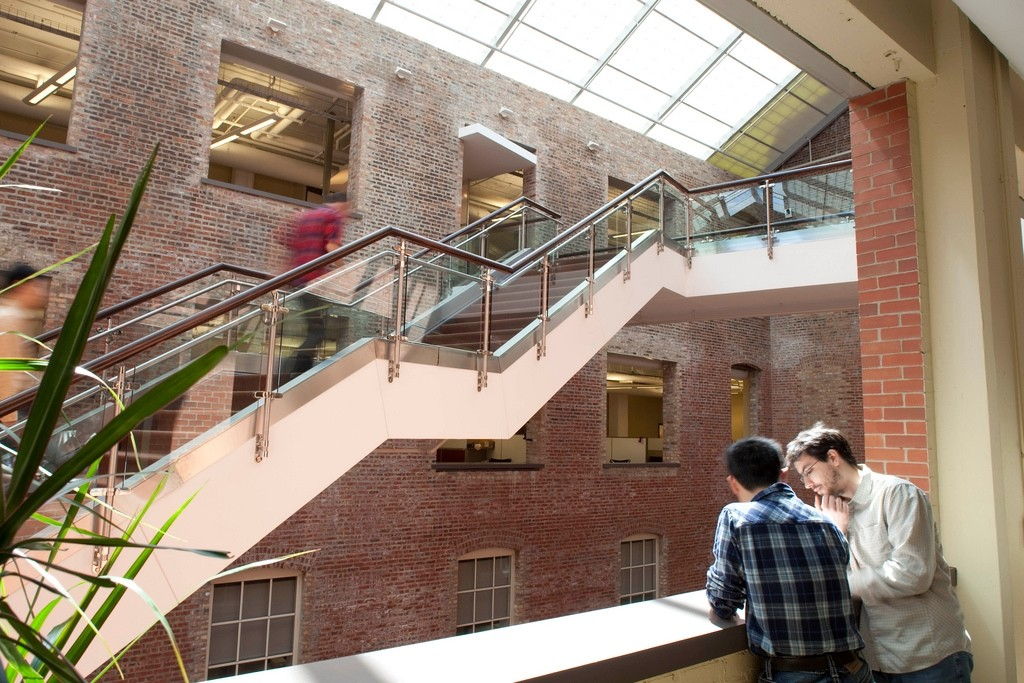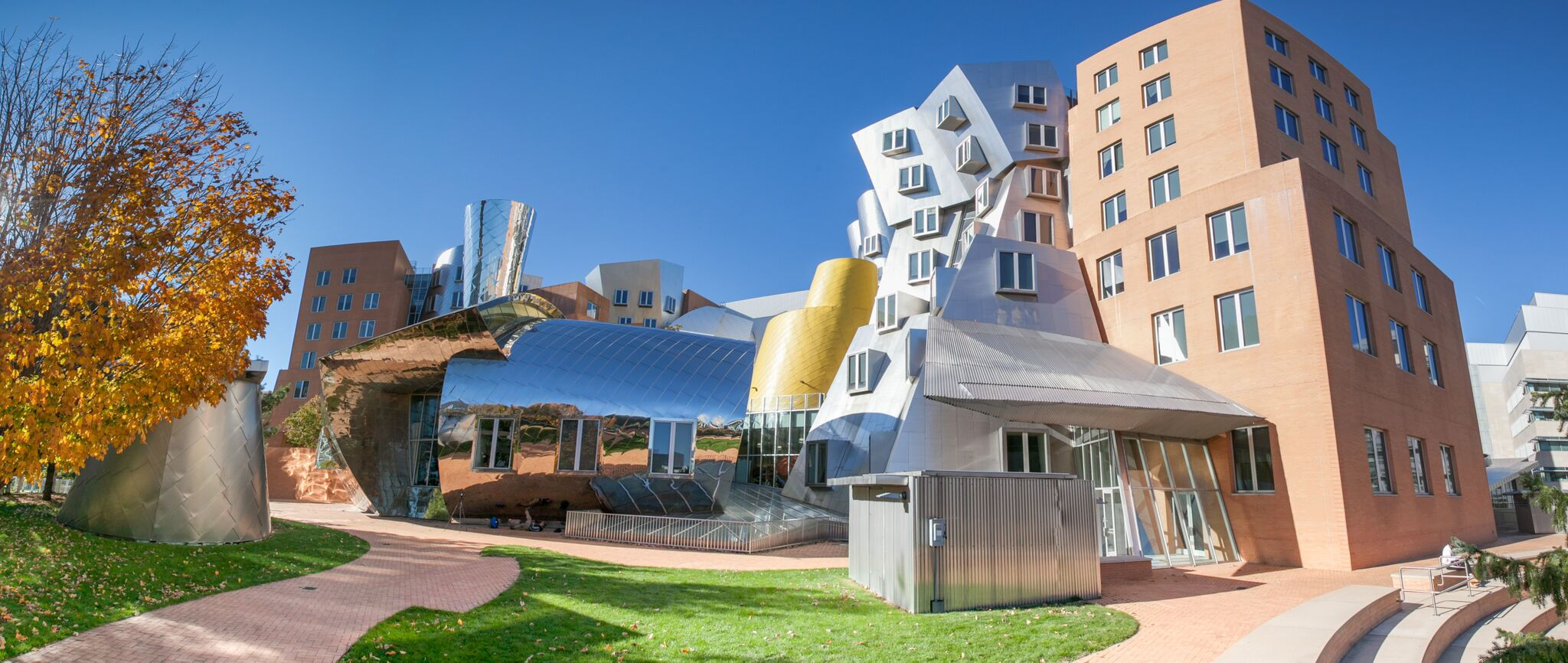Toyota Motor Corporation (TMC) is one of Japan’s major corporations most heavily connected with universities and research institutes in the United States. Established initially as a sales company in 1957,1 Toyota Motor Sales U.S.A. created Calty Design Research in 1973, becoming the first research operation ever opened by the automotive giant outside of Japan.2
With a presence in the United States spanning over 60 years, Toyota has made a commitment to supporting and collaborating with higher education institutions in the United States. In 2008, TMC pursued a research collaboration with international universities, which became known as the Toyota Global Creative Network. The Network was managed until its termination in 2012 by the Corporate Value Creation unit of Toyota Technical Division in Aichi Prefecture, TMC’s headquarters.3 One of the research spaces founded under the Global Creative Network was in Chicago, and some of the research projects were done in collaboration with the Illinois Institute of Technology.

Photo courtesy of Toyota Technological Institute at Chicago, 2021.
Toyota has another presence in Chicago through the Toyota Technological Institute at Chicago (TTIC). Founded in 2003, TTIC was initially an offshoot of the Toyota Kōgyō Daigaku based in Nagoya, Japan (TTI-Japan). TTIC is a small technical university, which has a School of Engineering, a master's program, and a doctoral program. TTI-Japan was founded in 1981 with an endowment of $300 million from the TMC. TTI-Japan achieved excellent levels of expertise in many areas of engineering and physical sciences, but was lacking in comparable success in computer science. As a way to become more competitive in this area, TTI-Japan decided to establish TTIC with an endowment of $105 million.
TTIC was intentionally established at the University of Chicago campus and has a close affiliation with the University of Chicago Computer Science Department. An agreement reached between the two institutions allows TTIC students to register for University of Chicago courses and, conversely, University of Chicago students may register for TTIC courses at The University of Chicago Hyde Park campus facilities, where TTIC is located. TTIC offers a graduate program leading to a doctorate in computer science, and is currently focusing on machine learning, algorithms and complexity, computer vision, speech and language technologies, computational biology, and robotics.
Finally, the newest U.S.-based institution fully funded by Toyota Motor Corporation as a subsidiary of Toyota Motor North America is the Toyota Research Institute-Advanced Development (TRI-AD). Established in 2015 and building on the automotive manufacturer’s long history of collaboration with U.S. universities, TRI-AD set up three research locations at Stanford University in Los Altos, California; Massachusetts Institute of Technology in Cambridge; and the University of Michigan in Ann Arbor. With an initial investment of $2.8 billion,4 the TRI-AD was created to “leverage AI to improve safety, mobility and human ability” and “to improve the quality of life for everyone.”5 Other universities such as the University at Buffalo and University of Connecticut have also taken part in research projects on new materials.6

Photo courtesy of Massachusetts Institute of Technology Computer Science & Artificial Intelligence Lab, 2021.
As listed on the TRI website, the ongoing research at the Institute focuses on areas such as accelerated materials design and discovery (AMDD), machine assisted cognition (MAC), robotics, and automated driving, all cutting-edge AI and technology research areas. Summaries of the 98 completed projects, which in the first five years involved 100 faculty members and 200 students, are now available on the Institute’s website, in line with the original vision that the research, while driven by corporate interests, is available openly to all.
As a measure of the success the initial work of the TRI-AD has recorded, the Institute has announced at the end of January 2021 that it will add 13 more U.S. universities to the research projects it is currently running. The new phase will be for another five years and will be financed with an amount more than double the one from 2016, now reaching $75 million. According to the Institute’s own press release of January 26, 2021, the AI research project will become “one of the largest collaborative research programs by an automotive company in the world.”7 In order to be included in the next five years of research, the selected universities submitted proposals for research projects to be pursued in collaboration with TRI researchers. In the end, TRI chose to pursue 35 projects focused on some of the main areas of research from the first five years of work: automated driving, robotics, and MAC. The universities that will now join the research endeavors are Carnegie Mellon, Columbia, Florida A&M, Georgia Tech, Indiana, Princeton, Smith College, Toyota Technological Institute at Chicago, Berkeley, University of Illinois, University of Minnesota, University of Pennsylvania, and UCLA, in addition to the three original partners, MIT, Stanford, and University of Michigan.
Along with the announcement of the U.S. institutions, Eric Krotkov, the TRI chief science officer, explained that the first five years of activity generated 69 patent applications and nearly 650 papers. The United States Patent and Trademark Office awarded Toyota more patents than any other automaker in 2020, according to an annual ranking by the Intellectual Property Owners Association (IPO). For the next five years, TRI intends to “push even further and do so with a broader, more diverse set of stakeholders. To get to the best ideas, collaboration is critical. Our aim is to build a pipeline of new ideas from different perspectives and underrepresented voices that share our vision of using AI for human amplification and societal good.”8
While the results of this extraordinary example of Japan industry and U.S. higher education collaboration is still at its beginnings, it has already become a model of successful partnership at a much larger scale than just corporate R&D, and it holds enormous potential for the U.S.-Japan partnerships in the future.
In addition to supporting research, Toyota has collaborated with a variety of national organizations to provide scholarship and grant opportunities for students who may not otherwise be able to afford a college education. Many of these philanthropic initiatives target women and minorities, with the intention of diversifying the college landscape and encouraging students to pursue professional careers in fields where there has historically been underrepresentation. To help inspire the next generation to pursue careers in STEM-based fields, including mobility, Toyota launched its virtual education hub at www.TourToyota.com with an immersive experience and chance to visit many of our U.S. manufacturing facilities. The hub also includes a series of free STEM-based lessons and curriculum through Toyota USA Foundation partners, virtual field trips, and more.
1. Toyota Newsroom, “Company History.” https://pressroom.toyota.com/company-history/. Accessed 02.20.2021.
2. Toyota Newsroom, 2020. “Calty Design Research Fact Sheet.” https://pressroom.toyota.com/calty-design-research-fact-sheet/.
3. See, “Toyota Jidōsha 75-nenshi” (Toyota Motor Corporation: 75 Years of History). https://www.toyota.co.jp/jpn/company/history/75years/data/automotive_business/products_technology/research/creation/index.html.
4. Cowan, Jill, 2018. “Inside Toyota’s Quest to Future-Proof Itself for the Auto Industry’s ‘Life-or-Death Battle’.” In Dallas News, November 11, 2018. https://www.dallasnews.com/business/local-companies/2018/11/11/inside-toyota-s-quest-to-future-proof-itself-for-the-auto-industry-s-life-or-death-battle/.
5. See Toyota Research Institute. “Our Work.” https://www.tri.global/. Accessed 02.23.2021.
6. See Shenouda, Stephanie 2017. “Toyota Research Institute to Partner with U-M, Others on Artificial Intelligence.” In DBusiness, March 30, 2017. https://www.dbusiness.com/daily-news/toyota-research-institute-to-partner-with-u-m-others-on-artificial-intelligence/. For details on the research project and its scope at the University at Buffalo, see Nealon, Cory 2017. “Toyota Research Institute awards UB $2.4 million to hunt for new materials.” In UB Sustainability News, April 27, 2017. https://www.buffalo.edu/sustainability/about/news-and-events/latest-news.host.html/content/shared/www/sustainability/articles/news-articles/toyota-research-institute.detail.html. For University of Connecticut, see Poitras, Colin 2017. “UConn Joins Hunt for New Materials.” In UConn Today, March 30, 2017. https://today.uconn.edu/2017/03/uconn-joins-hunt-new-materials/#.
7. Toyota Research Institute 2021. “Toyota Research Institute Launches Next Phase of Collaborative Research with Diverse Roster of World-Class Academic Institutions.” January 26, 2021. https://www.tri.global/news/university-collab/.
8. Toyota Research Institute 2021. “Toyota Research Institute Launches Next Phase of Collaborative Research with Diverse Roster of World-Class Academic Institutions.” January 26, 2021. https://www.tri.global/news/university-collab/.
